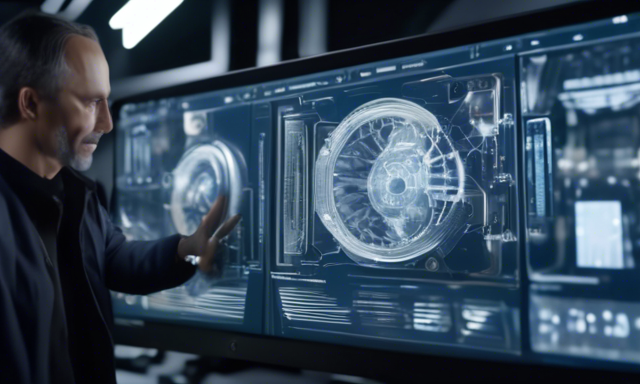HP 3D Printing and NVIDIA Modulus Enhance Manufacturing Digital Twins
HP 3D Printing and NVIDIA Modulus have joined forces to create an open-source manufacturing digital twin using physics-informed machine learning (physics-ML). This collaboration is set to revolutionize AI engineering applications by integrating physical laws into the learning process, as highlighted by NVIDIA Technical Blog.
Advancements in Physics-ML
Physics-ML represents a growing field that incorporates physical principles into machine learning models, improving the accuracy and efficiency of neural networks. The open-source framework, NVIDIA Modulus, simplifies the development, training, and optimization of these models through a user-friendly Python interface. It also provides reference applications to assist industry experts in applying physics-ML to real-world scenarios.
– Physics-ML embeds physical laws into machine learning models, enhancing neural networks’ generalizability
– NVIDIA Modulus is an open-source framework that facilitates the creation and training of physics-informed machine learning models
– It offers a simple Python interface for building and fine-tuning these models
– Reference applications are available to help domain experts apply physics-ML in practical use cases
Digital Twins in Additive Manufacturing
HP, a pioneer in additive manufacturing, has a rich history of technological advancements such as thermal inkjet technology. The introduction of HP Metal Jet allows for the production of high-quality 3D metal components. HP is actively developing a digital twin for Metal Jet technology to enhance design parameters and process control, leading to improved part quality and manufacturing efficiency.
– HP Metal Jet technology enables the production of industrial-grade 3D metal parts
– HP is creating a digital twin for Metal Jet technology to optimize design parameters and process control
– The Virtual Foundry Graphnet model applies physics-ML to accelerate metal powder material phase transition calculations
– This model demonstrates fast processing speeds and high-fidelity simulation of the metal sintering process
Physics-ML Innovation at HP
Despite being in its early stages, physics-ML holds immense promise for the future. HP’s Digital Twin team believes in the power of the open-source community to accelerate the development of this technology. By making Virtual Foundry Graphnet open-source through NVIDIA Modulus, HP has embraced the physics-ML community to drive innovation and collaboration in AI engineering applications.
– Physics-ML surrogate models offer high-fidelity emulation, enabling faster design iterations
– Product design teams can now receive instant feedback on manufacturability and automated design screening
– HP’s Digital Sintering software has been deployed to HP Metal Jet customers, significantly reducing design iteration times
Empowering Researchers
Physics-ML surrogate models are at the forefront of real-time simulation workflows, showcasing AI’s potential to expedite processes. Innovations like Virtual Foundry Graphnet underscore AI’s ability to streamline simulation workflows, providing rapid predictions and insights. The democratization of AI in manufacturing is critical to empower a broader audience of innovators to address industry challenges.
– Virtual Foundry Graphnet exemplifies the power of AI in accelerating simulation workflows
– AI researchers and HP 3D Printing team collaborate using the NVIDIA Modulus open-source project
– NVIDIA supports the physics-ML research community by promoting collaboration and innovation in advanced AI tools
Hot Take: Embrace the Future of Manufacturing with Physics-Informed Machine Learning
As a crypto enthusiast, staying informed about the latest advancements in AI and machine learning can provide valuable insights into the evolving landscape of technology. HP’s collaboration with NVIDIA Modulus showcases the power of physics-ML in revolutionizing manufacturing processes and accelerating innovation. By leveraging open-source platforms and embracing community-driven initiatives, the possibilities for AI engineering applications are endless. Stay tuned for more exciting developments in the realm of physics-informed machine learning!





 By
By
 By
By
 By
By
 By
By

 By
By